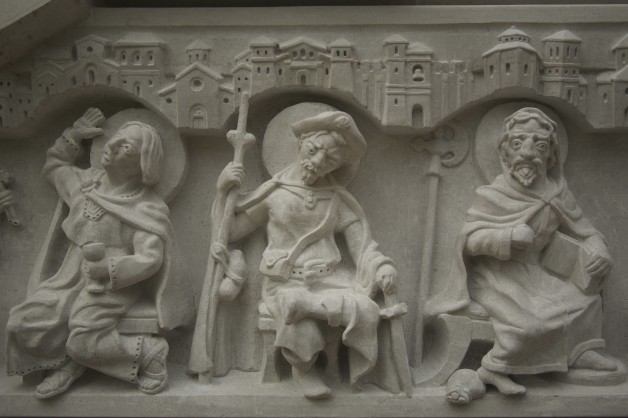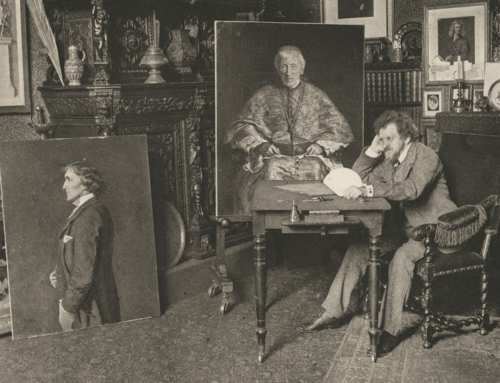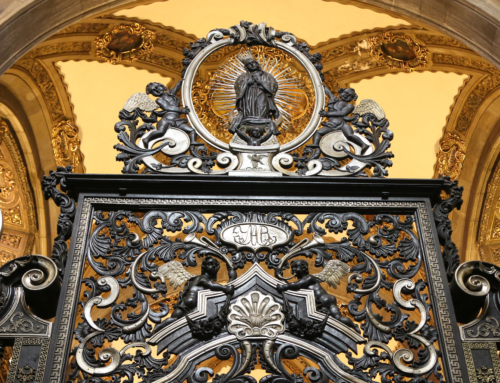Dissatisfaction with what is is a fundamental aspect of the human condition. As St. Bernard observes, “A man who has a beautiful wife looks at a lovelier woman with a discontented eye or mind.” We often find it difficult to enjoy the things we have or the people we encounter—if only I had x, or if only I knew y . . . Getting and spending, attaining consumption but not consummation, we are left wanting more—or at least something else.
Dissatisfaction, however, can also be properly directed. When one can see past the weaknesses or injustices of a situation, finding ways to move from bitterness or narrow-mindedness toward life-giving hope for what could be or vigorous action on behalf of what may be, dissatisfaction with what is can be a tremendous force for achieving the good. We must not be hearers only, but doers, and yet doing often requires a discerning sense of what ought to be done in contradistinction to what happens to be or to have been.
One person who often expresses this positive form of dissatisfaction is Jesus Christ. Throughout the Gospel, we find him offering critiques of various practices and mentalities of his contemporaries whom he had come to save. And yet, he was no mere begrudger attacking what didn’t suit his fancy or aesthete offended by the garishness of inter-testamental Palestine. Rather, Jesus was consistently dissatisfied with what was false or imperfect. He came not to take away our freedom, but so that we might have life, and have it abundantly.
Perhaps no better example could be given of the positive and negative aspects of dissatisfaction than Jesus’ encounter with the tax collector Matthew, who later became an apostle and evangelist of Jesus Christ. What tax collector has ever been satisfied with what is, in the sense of what he has already collected? Particularly in the ancient world, where there was little oversight and where a tax collector was able to personally benefit from an ever increasing collection, what tax collector could be satisfied with what he had already collected, and not yearn for what was yet to be collected?
Jesus, when he encountered this tax collector, was also dissatisfied with what he saw. He was not dissatisfied because Matthew was not fulfilling his quota as a tax collector, but because he was not fulfilling his true potential as a man: he was not yet fully alive, for he had not yet encountered the one who is life.
The Venerable Bede puts it this way: “Jesus saw a man called Matthew sitting at the tax office, and he said to him: Follow me. Jesus saw Matthew, not merely in the usual sense, but more significantly with his merciful understanding of men. He saw the tax collector and, because he saw him through the eyes of mercy and chose him, he said to him: Follow me.”
Jesus sees not just what is, but in his mercy sees what can be accomplished through the power of his grace. In this respect, he follows the model of the sculptor articulated by Pseudo-Dionysius: “We would be like sculptors who set out to carve a statue. They remove every obstacle to the pure view of the hidden image, and simply by this act of clearing aside they show up the beauty which is hidden.” Jesus is like a sculptor who upon encountering a piece of marble sees not just what is already there but the form of a masterpiece waiting to be freed from the extraneous rock that is suffocating the sculpture within.
Christ the sculptor exceeds the human sculptor in many ways. Unlike human sculptors, who can only fashion art out of what already exists, Christ is the Word through whom everything was made that was made. Unlike human sculptors, who tend to limit themselves to particular artistic styles, whether in obedience to or in reaction against their circumstances, Christ sculpts in an infinite variety of styles according to his mysterious aesthetic sense which appreciates a range of more and less beautiful objects. Unlike human sculptors, who work with their hands, Jesus made us by speaking and remade us by dying. What other sculptor has polished his work with the patina of his own blood?
Jesus takes nothing away; he gives us everything. He who was like us in all things but sin takes nothing away from us but sin itself. We can only love what is already lovable, but Jesus loves us in such a way that his love makes us lovable. The depth of his love is revealed in that while we were yet sinners, he died for us. While we were his enemies, raging against him, he made peace with us through his death on the cross. We can hardly forgive each other for an unkind word or an overreaction, and yet in him we have redemption through his blood, the forgiveness of our sins, according to the riches of his grace.
In Scripture we encounter the image of the inanity of inanimate sculptures entering into a relationship with or standing in judgment over their craftsmen: “Does the clay say to him who forms it, ‘What are you making?’ or ‘Your work has no handles’?” (Is 45:9). “Will what is molded say to its molder, ‘Why have you made me like this?'” (Rom 9:20). As rational creatures, however, we have the opportunity to exceed our inanimate counterparts by responding with love to our creator. In the words of St. Bernard, “Why should the work of an artist not love its master, if it has the ability to do so?”
✠
Image: Andrew Wilson Smith (b. 1984), “The sons of Thunder; John, James, and Matthew,” Our Lady of Clear Creek Abbey, Hulbert, Oklahoma.








